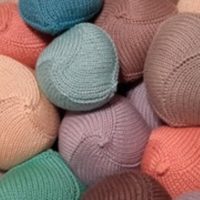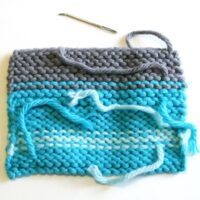Download Episode.
To get your knitting question answered on the show, email your question to podcast@verypink.com.
You can see Casey’s website and her social media buttons on kcknits.com.
Information on things we mention in this episode:
Book: No Sheep for You
Master’s Knitter Certification program through The Knitting Guild Association www.TKGA.com
Craft Yarn Council Teaching Certification – www.CraftYarnCouncil.com
And one clarification – in the discussion about yarn-overs, I said that they “don’t actually create a stitch”, but that isn’t exactly clear. They do increase your stitch count, but there is a hole below the loop where you would normally see a stitch.






Staci, speaking of front and back of the work, I think that Lucy Neatby has the best definition. She calls them “private’ and “public” sides of the work.
Thanks for both the podcasts and the videos. You’re great.
Lia from Italy
Hmmmm, that question about an animal fiber substitute, the only thing that comes up in my head would be roving/single ply style of yarn. Because of the halo, the woven ends will kind of, stick, for a lack of a better term. Anyone who has ever tried frogging a piece made out of roving yarn, even in acrylic, they’ll know what I’m talking about. I haven’t seen a lot of cellulose yarns in a single ply form. I’ve only found bamboo single ply yarns but that’s about it. Felting is pretty out of the question, you can still needle felt acrylic roving, but felting an actual knitted/crocheted piece, nope.
Just wanted to share–you say you keep these to 20 minutes because that’s what you’d prefer as a listener, but I swear I could listen for hours. You girls are so entertaining!
I agree with Bethany. You ladies do a great job. Any chance of expanding the podcast to 30 or 40 minutes?